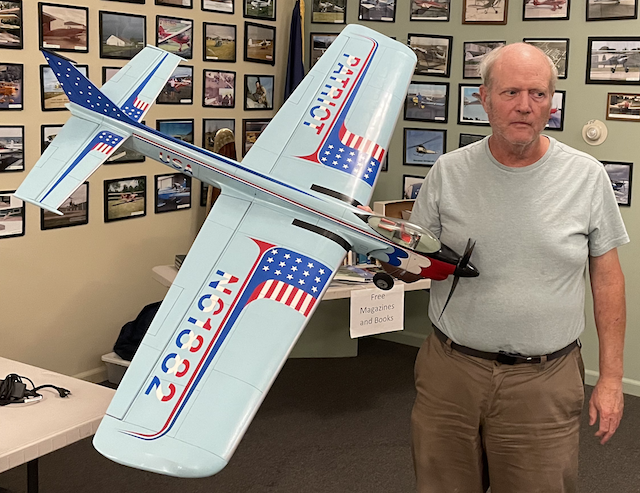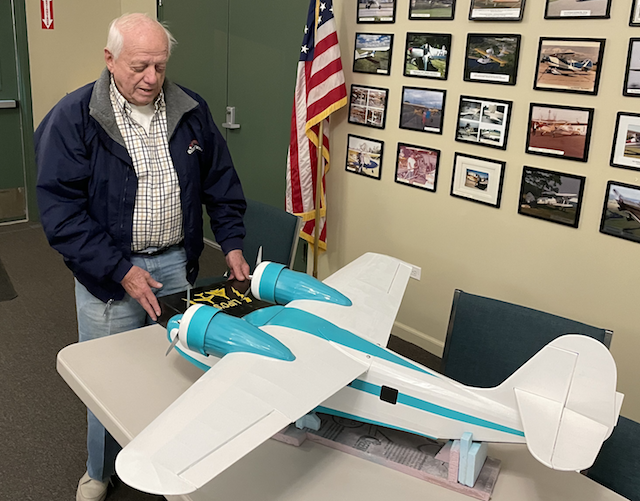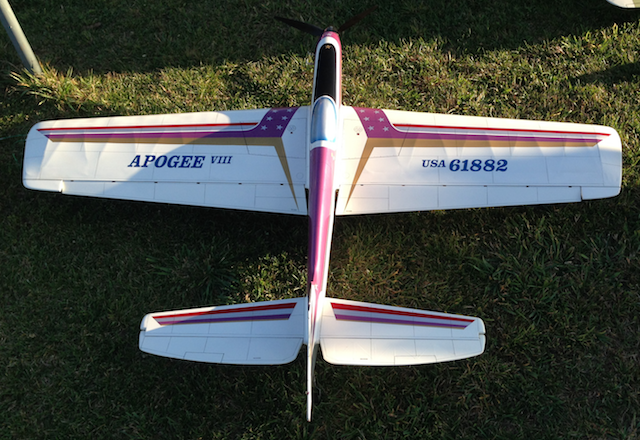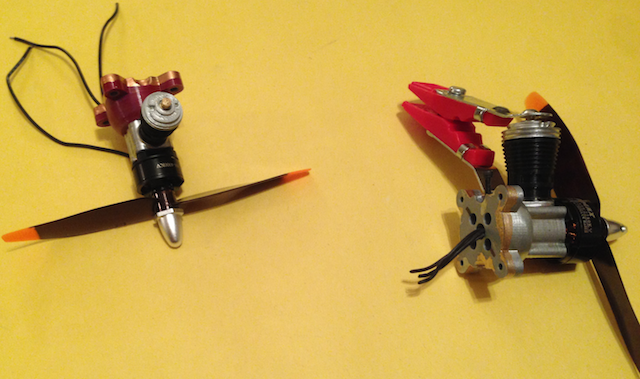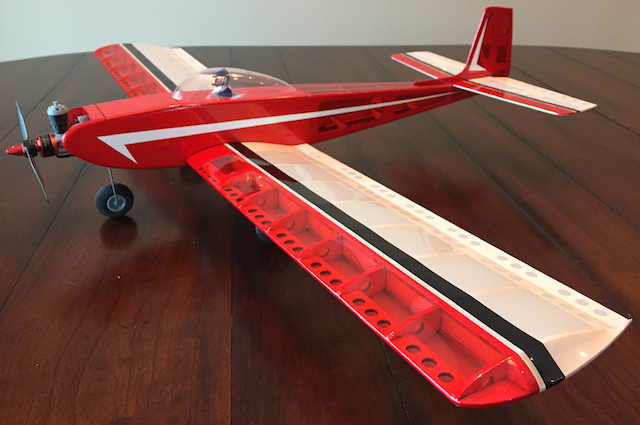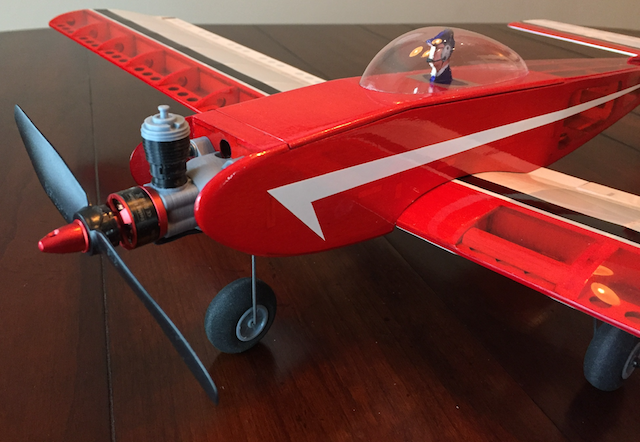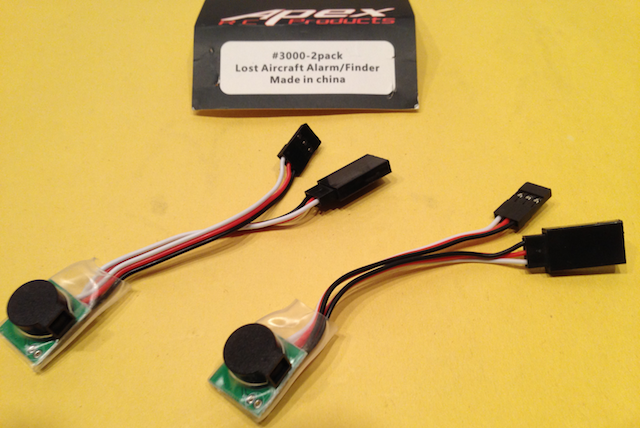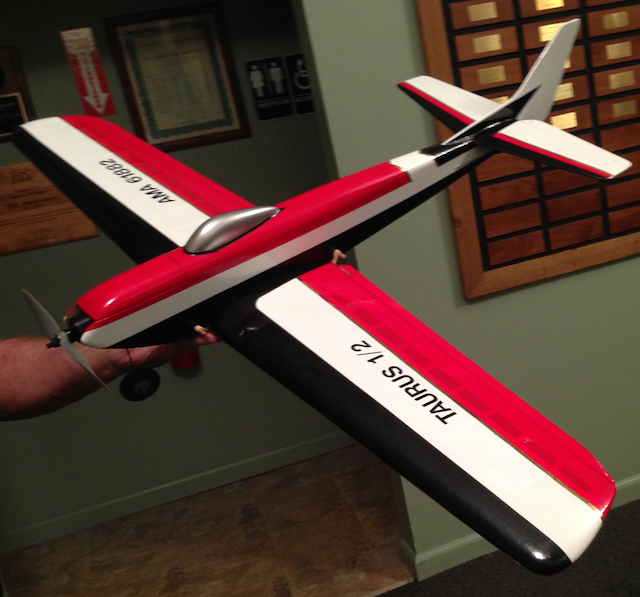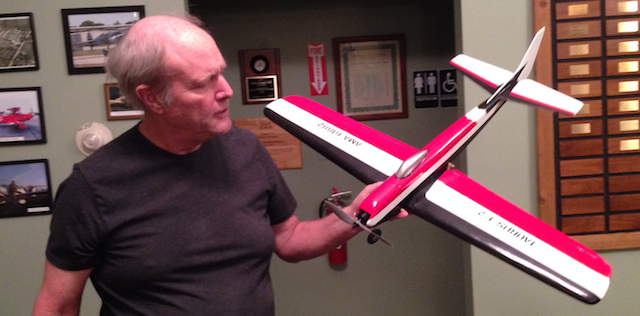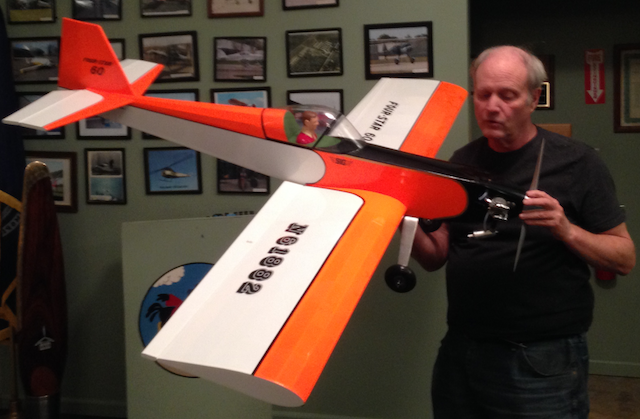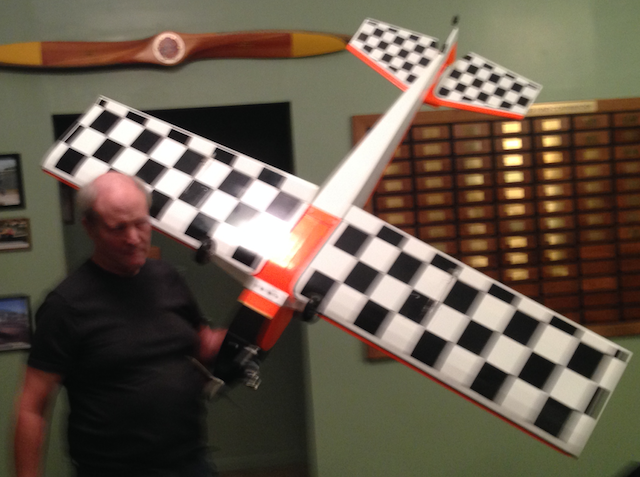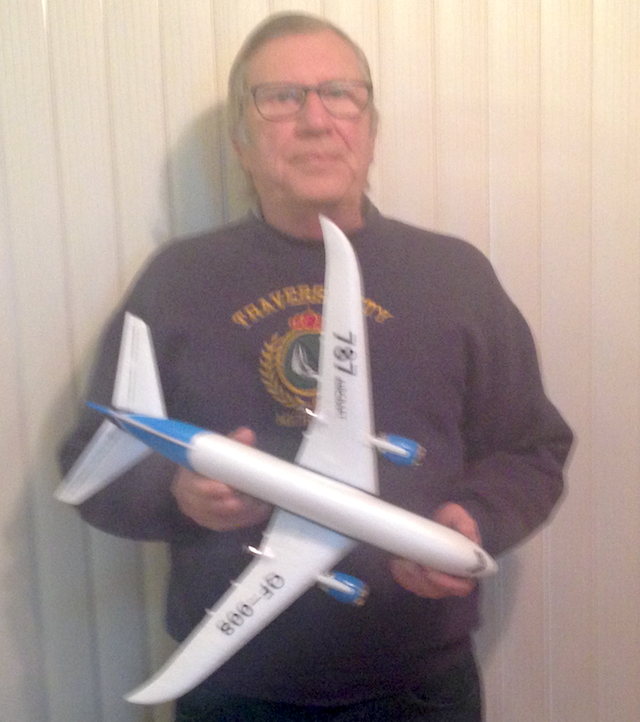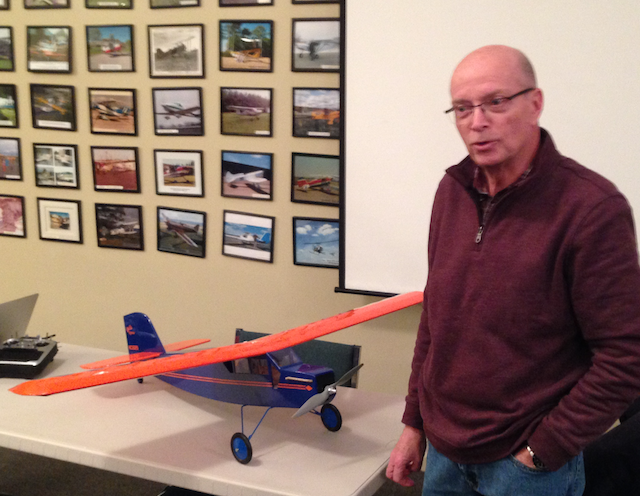Bob McDonald showed off his beautifully executed, Jerry Phelps designed, Patriot Control Line Classic Stunt Model. His version started as a kit, but even though it is a fairly new kit, with laser cut parts, he still had to do a lot of "modeling" to get it together. The model uses a non-stock HP Motor 0.40 with a special piston and liner. The completed model weighs 53 oz. and has 625 sq.in. of wing area. The beautifully finished model has 149 individually placed stars. Its covered with Polyspan, which was doped on. The colors are automotive paint covered with a clear coat. It is a great flier and Bob has already won a contest with it this season. |
Jim Lapham shared his Grumman Goose. It has been a build of his for the last 4 years, as he only worked when he was in Florida. He noted the fuselage stringers are made from balsa instead of spruce and that they are quite fragile and brake easily. Over time he has misplace the original outrigger pontoons and to start building some soon. He also noted that fitting the windshield was a real pain! He shared a 2S "A123" 2500mAh pack that he'd planned to use to power the plane. Several members questioned whether that would be enough voltage to power the plane, compared to a 3S LiPo.  |
Ken Sutton shared his recently completed Dyna-Flite "Fun Scale" P-51. It has a 50 inch wingspan and 493 square inches of wing area. It weighs in at. 4.6 lb. or 73.6 ounces. The power is an O.S. Max 48 4-stroke. It is guided by a Tactic TTX600 4-channel radio. It was done up in the blue color scheme to represent the Navy's evaluation unit.. 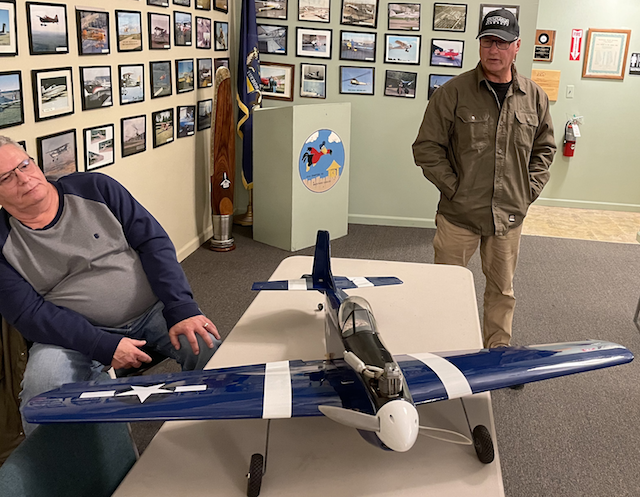 |
Rick Sawicki share his Flite Test Bloody Baron Speed Build Electric Airplane Kit (737mm). 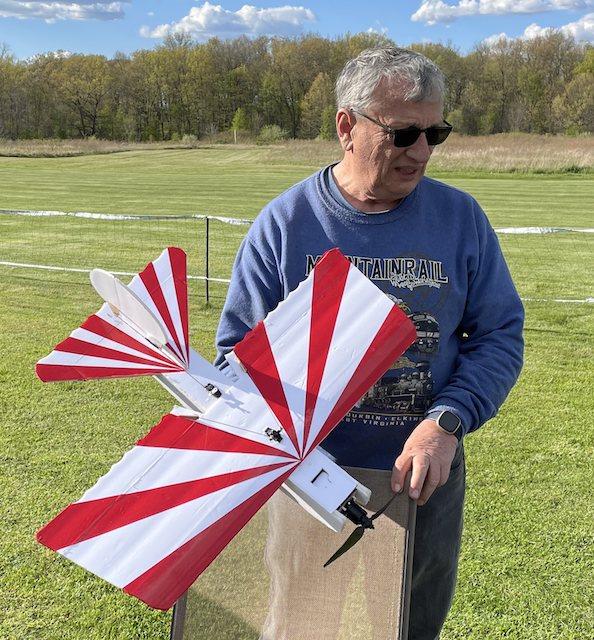 He noted that he built it for the United Flying Organization (UFO) combat events. He noted that 15 UFO members ordered and built them.station. He says it flies great! |
Bob McDonald brought two beautiful planes to the meeting. The first one that he shared was his self-designed, scratch built Apogee VII control line plane. It features an internal tuned pipe and three blade prop that was fabricated by Bob himself. The beautiful finish is provided by automotive polyurethane. The plane took 9th place at the control line Nationals this year! Congrats, Bob! 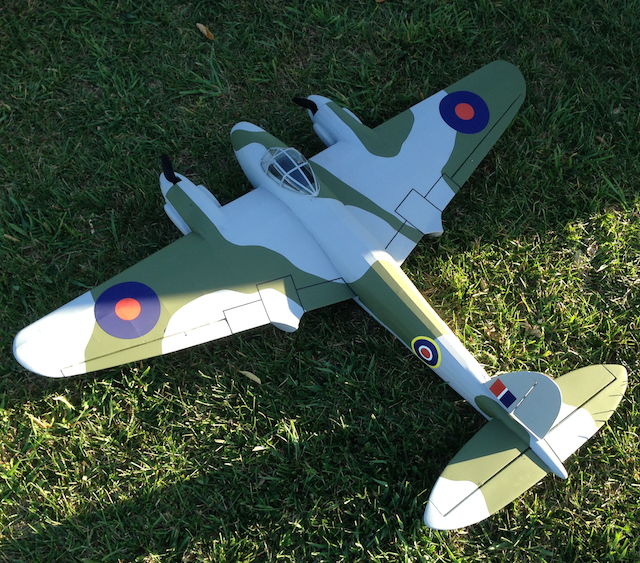 The second plane was a Dare Mosquito BMK-IV by Brodak. The specs on the Brodak site are:
When Bob purchased the kit, designed for rubber powered free flight, he was told that it was "easily convertible to RC." He did not find that to be true. He changed the dihedral and wing incidence angle and had to stiffen it up quite a bit. It uses two small Cobra inner runner brushless motors, with counter rotating props and a 2S 800mAh LiPo pack, as that is all that would fit in the plane. It is beautifully covered with Japanese tissue and painted with dope. The ready to fly weight is 29 ounces. 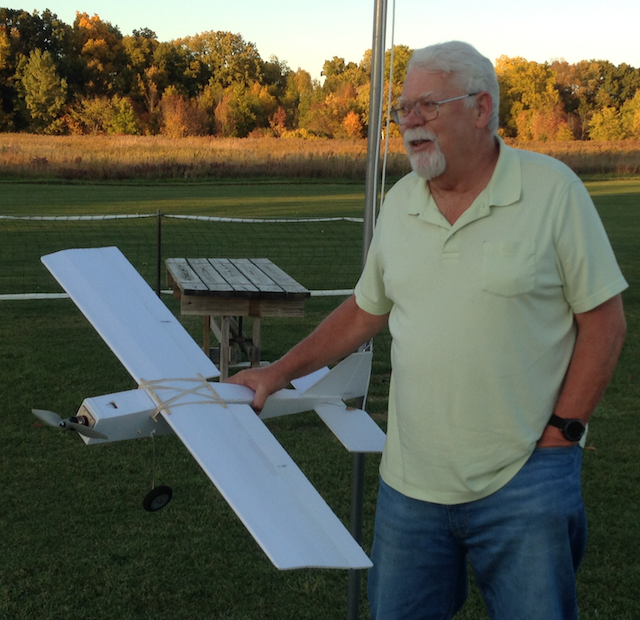 Paul Sockow shared the details about his Flite Test (FT) Simple Stick. The details from the FT Website are a bit sketchy and only note a wingspan of 1067mm. No other details are given. Paul noted that he purchased the FT kit, which uses what FT calls "Make Foam", because the plans had not yet been released. The new, white "Maker Foam" is much easier to paint than the previous brown covered foam that had been previously used in the FT kits. He plans to add some color soon. He said that the plane went together well and flies very well. The build thread for the kit is found on YouTube. I asked Paul, via email, about the power system, and he replied with all of the following information. It sounds like he used the Flite Test Power Pack B "Radial Edition". Pack Includes:
A note from Ken Myers: I found the The "Simple Stick" - builders thread and plans on the Flite Test Forum. The plans are found here at Simple Stick V1.3: You MUST join the Flite Test Forum to be able to download the plans. The plans are extremely basic with some important parts not shown. The plans are not by FT, but the actual designer of the plane who goes by the handle The Hangar on the FT Forum. The build thread covers parts like the power pod and notes what the original builder/designer did.
Roger Wilfong showed several electric motor mounts, from Willy Nillies Hobby and Crafts, that give the impression of the electric motor being a Cox 049 and 020.
Note the 049 glow plug clip Roger added to improve the illusion.
Denny Sumner also had a Willy Nillies' product to share.
His latest build is the Willy Nillies' Jr. Skylark 250.
He did several modifications to the kit.The modifications include; a bolt on wing, a much larger hatch where the whole top comes off to get at everything, and a steerable nose wheel.
He covered his version with transparent white and red Ultracote along with some regular Ultracote.
The power system consists of a Willy Nillies' 020 and a 2S 500mAh LiPo.
Denny's version weighs 6.7 oz., ready to fly.
Ken Myers set up his venerable FMS SuperEZ trainer.
He turned the radio system on, checked the controls and then left the transmitter alone. One minute later, when no inputs were made on the transmitter, a beeping could be heard coming from the plane.
Ken was demonstrating the Apex RC Products "Lost Aircraft Alarm/Finder" #3000 from a two pack that he'd picked up on Amazon.
Several people noted that it could be louder, as Ken had it placed in the foam fuselage of the SuperEZ.
Ken also noted that it would only work as long as the main power battery was connected, but at least it was better than nothing.
Bob McDonald brought in two beautifully completed models.
The first one he shared was a BMJR 1/2-scale Taurus.
The Taurus 1/2, by Paul Bradley, is a scaled-down version of the original by Ed Kazmirski.
The model has a wingspan of 36" with a wing area of 194 sq.in.
He said that he had first noticed it at the 2019 Toledo show and thought that it was flat out "cute".
He finished his in a beautiful red, white and blue color scheme using Ultracote and Parklite covering. He noted that the kit was "okay" to put together. It is powered by a Cobra brushless motor and 2S LiPo battery.
He noted that getting the radio system equipment into the the narrow fuselage was a bit of a challenge.
It weighs 15.3 ounces with the 2S LiPo onboard.
His second plane was a Sig Four-Star 60, which he built from a Sig kit. He had purchased the kit from Mike Russell.
It is beautifully covered mostly in orange and white Ultracote.
The bottom of the wing and horizontal stabilizer are covered in a checkerboard pattern, with each black square cut out separately.
It is powered by a brand-new Saito 72SA. As with all of the Four-Star series of kits, this one builds easily and flies well. His weighs 7 lb. 11 ounces, but he noted that he had to add 7 oz. of nose weight to achieve the proper center of gravity (CG).
The specifications from the Sig Manufacturing Web site note:
Ken Myers shared his QIFENG QF008 787. He said that it is made of EPP foam and comes as a kit. The airframe needs to be put together and the flight control/receiver needs to be installed.
He said that he purchased this plane because it could be paired to his Jumper T16 Multi-protocol radio. He previewed this radio in the February Midwest RC Monitor.
With a 3-axis gyro onboard the flight controller, it is very easy to fly. It uses differential thrust to "steer" it through the air and it also has elevator for pitch control.
He feels that it would make a better trainer type plane than using a computer flight simulation program, as the plane is actually flying in a real sky, with real control inputs.
The plane has a wingspan of 22", wing area of 50.3 sq.in. and weighs 2.18 oz.
A complete review is planned for the April 2020 issue of our newsletter.
Model of the Month, Jan. 2020
Denny Sumner shared his new Robinhood 25.
As with all of Denny's planes, it is beautifully and meticulously covered. It is covered in Midnight blue and orange Ultracote.
The plane was constructed from an Old School Models Robinhood 25 laser cut kit.
He is using a Cobra 2820/10 motor, Cobra 60A ESC, Spektrum Rx and Hitec HS-81 servos.
A 3S 3300mAh LiPo pack provides the electrons.
The Robinhood 25 has a 50" wingspan and an area of 400 sq.in. It weighs 3 lbs. 1 oz.
More information on Denny's Robinhood 25 can be found on RC Groups, starting on this page 7, post #99.
There are a lot more super photos of his project in his post.
|
